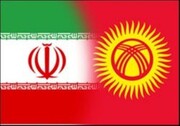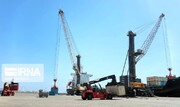Jan 26 marks the National Day of India and was therefore, a public holiday there. The Indians celebrated the 71st anniversary of ratification of their country’s constitution, as the document for their country’s national integrity.
The interesting point is that on March, 15, 1950, that is less than two months after the implementation of the Indian Constitution, Tehran and the New Delhi signed their Document on Amicable Bilateral Relations and Friendship. Signing that historical document had roots in the historical record of the two nations’ amicable ties.
Iran and India have still maintained their excellent cultural relations at highest possible level and the cultural attaché sections of both countries are quite active. The Iranian Cultural Attaché in India sponsors Farsi language courses and cultural conferences, publishes books, a quarterly on Iran-India negotiations, and… that contribute greatly to the broadening of bilateral cultural relations.
In the field of media relations, too, the two sides have paved the way of further development of cooperation. IRNA is cooperating with Indian news agencies, such as the PTA and Annie bilaterally, and at the level of the Oceania-Asian News Agencies (OANA).
Such a strong cultural foundation can greatly contribute to the expansion of Iran-India economic ties and trade, especially since the two countries have broad potentials for cooperation in this field.
***Chabahar is not merely Chabahar
Development of Chabahar port city in farthest southeast part of Iran had from remote past been in the focus of attention for both the Iranian and the Indian investors. During the Indian Prime Minister Narendra Modi’s visit to Iran in 2016, major agreements on development of Martyr Beheshti’s jetties and construction of Chabahar-Zahedan railway were signed. After that, too, during the bilateral, or trilateral meetings among Iran, India and Afghanistan in various levels, projects on development of Chabahar were discussed.
Connection of Chabahar with Afghanistan both helps India in having a safe path for business transactions with Kabul and for Afghanistan to diversify its foreign trade.
But recently, after Uzbekistan joined the negotiations for development of Chabahar and the publication of the news that Uzbekistan, too, will participate in Chabahar development plans, the significance of Chabahar even doubled.
In fact, this path is not only the connection route for India and Afghanistan, but also the only safe and reliable highway between India and the whole Central Asian countries. This is the perspective predicted by all technicians as of old times.
From this point of view, we can say that Chabahar is no longer merely Chabahar today, but a gate towards regional cooperation in economic, commercial and geopolitical cooperation in the region.
Parallel with Chabahar, completion of South-North commercial path on east side of Iran can also provide an easy path for India’s transactions with the Caucasus region, Russia, and naturally also the Eurasia economic region.
***Energy, foundation stone for sustainable development
India, with its 1.3 billion strong population, has been one of the major importers of energy. The population growth, although slow, the growth rate of city-dweller Indians that is above 2% annually, and more important than all, the rapid rate of industrial and economic growth have provision of oil and gas into one of the major objectives of that country.
Although economic recession due to the Corona virus pandemic has affected the energy consumption in India, this is a temporary phenomenon.
India has since 2018 been importing an average five million barrels of oil each day, and it is expected to rise up to six million barrels in 2025.
Furthermore, industrial development and increased usage of the electrical appliances will also increase India’s need to electricity, to an extent that according to the prediction of the International Energy Agency, if India’s electricity usage will keep on increasing at current rate it will be tripled by the year 2040. Although New Delhi can switch to usage of renewable energies and using low consumption appliances to decrease its electricity usage, at any rate its natural gas consumption for producing electricity will remain unchanged.
Under such conditions, Iran’s role as one of the major providers of India’s need to energy will be more significant.
***Banking and financial transactions
Oil and gas are not the only goods that bring close the Iranian and Indian economies. Iran is one of the major buyers of India’s agricultural products, particularly the Indian rice, tea and food ingredients. In addition to them, importing industrial and even electrical machines and medicine from India had constantly grown in recent years.
Furthermore, Iran exports in addition to oil, various types of petrochemical products, different types of fertilizers, plastic products, fruits and many other varied items to India, and there are also other still unused potentials for further diversify Iran’s exports to India.
Keeping in mind the broad potentials for Iran-India commercial and trade transactions, it has now been a few years that the two countries have been using the mechanism of trading with their own national currencies (Iranian Rial and Indian Rupee). With this mechanism and other banking and financial mechanisms, it is easy to predict a bright future for bilateral trade and business.
Preferential trade agreement between Iran and India that is approaching its final phases to be soon be implemented, too, further paves the ground for smoother commercial and financial transactions.
Tehran and New Delhi need to use all the existing potentials for boosting their commercial and economic transactions.
1424
Follow us on Twitter @irnaenglish









Your Comment